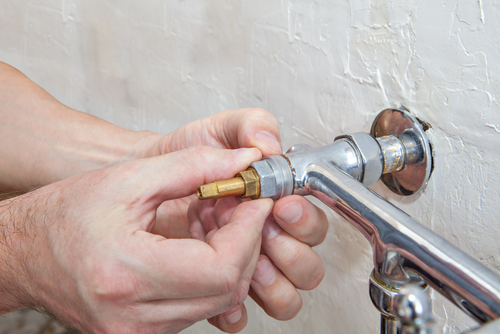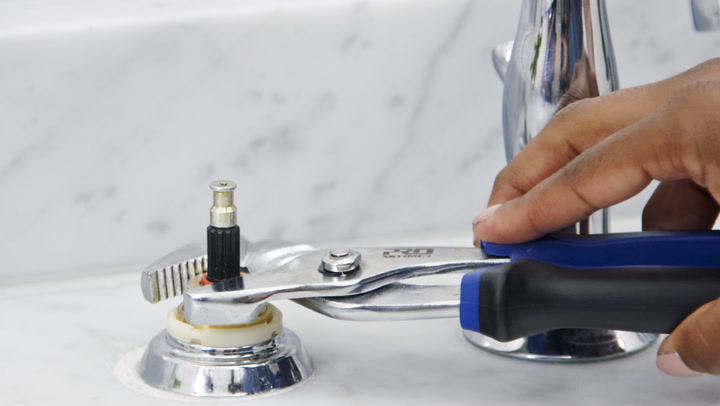Nearly everybody maintains their unique perception with regards to How to Fix a Dripping or Leaky Faucet .

Leaking faucets might feel like a minor trouble, but their impact exceeds simply the annoyance of the sound. From wasting water to incurring unneeded financial prices and health risks, overlooking a dripping faucet can cause various repercussions. In this write-up, we'll delve into why it's crucial to address this typical family issue promptly and efficiently.
Wastefulness of Water
Ecological Influence
Trickling faucets contribute substantially to water wastage. According to the Epa (EPA), a single faucet leaking at one drip per second can throw away more than 3,000 gallons of water per year. This not only pressures water sources however also impacts communities and wild animals dependent on them.
Financial Expenses
Boosted Water Costs
Past the environmental effect, trickling faucets can blow up water costs considerably. The accumulated wastage with time translates into greater energy costs, which might have been stayed clear of with prompt repairs.
Possible Property Damages
In addition, long term trickling can cause harm to components and surfaces surrounding the tap. Water accumulation can create discoloration, deterioration, and also structural problems if left unattended, resulting in extra repair service expenses.
Wellness Worries
Mold And Mildew and Mildew Growth
The consistent presence of dampness from a dripping tap produces an ideal environment for mold and mildew and mildew growth. These fungi not only compromise indoor air high quality but likewise present health and wellness dangers, particularly for individuals with breathing conditions or allergies.
Waterborne Illness
Stagnant water in leaking taps can become a breeding ground for microorganisms and other microorganisms, raising the danger of waterborne diseases. Pollutants such as Legionella germs flourish in stagnant water, possibly bring about serious health problems when ingested or breathed in.
DIY vs. Professional Repair
Benefits and drawbacks of Do It Yourself Repair Service
While some might try to repair a leaking tap themselves, do it yourself fixings feature their very own set of challenges. Without proper knowledge and devices, do it yourself efforts can aggravate the problem or bring about insufficient fixings, extending the issue.
Advantages of Working With a Specialist Plumber
Hiring a professional plumber guarantees that the underlying cause of the dripping tap is attended to properly. Plumbers have the competence and devices to diagnose and repair tap concerns successfully, conserving time and lessening the danger of more damage.
Step-by-Step Guide to Taking Care Of a Dripping Tap
Devices Needed
Before trying to deal with a trickling faucet, gather the essential devices, including an adjustable wrench, screwdrivers, replacement components (such as washing machines or cartridges), and plumber's tape.
Usual Faucet Issues and Their Solutions
Recognize the sort of tap and the specific issue causing the drip. Common problems consist of damaged washing machines, corroded valve seats, or defective O-rings. Refer to supplier instructions or on the internet tutorials for step-by-step support on repair work.
Safety nets
Routine Maintenance Tips
To prevent trickling faucets, execute regular maintenance such as cleansing aerators, checking for leakages, and replacing worn-out parts promptly. In addition, think about mounting water-saving tools or updating to more effective fixtures.
Relevance of Prompt Repair Works
Dealing with dripping faucets as soon as they're noticed prevents further water waste and prospective damage, eventually conserving both water and cash in the future.
Impact on Home Value
Assumption of Well-Maintained Property
Keeping a building in good condition, consisting of addressing upkeep issues like trickling taps, improves its viewed value and worth amongst potential customers or renters.
Impact on Resale Worth
Features with well-kept plumbing components, including faucets, command higher resale values in the real estate market. Addressing dripping taps can add to a positive perception during residential or commercial property inspections and negotiations.
Ecological Duty
Specific Payment to Conservation
Taking duty for taking care of dripping faucets lines up with broader initiatives towards water conservation and environmental sustainability. Every person's activities collectively make a significant influence on preserving valuable sources.
Sustainable Living Practices
By prioritizing timely repair services and adopting water-saving routines, people add to lasting living practices that benefit both present and future generations.
Conclusion
Attending to a leaking faucet exceeds simple benefit; it's a necessary action towards saving water, decreasing monetary expenses, and safeguarding health and residential property. Whether via do it yourself repair services or specialist help, acting to fix leaking faucets is a small yet impactful means to advertise responsible stewardship of sources and contribute to a much healthier, more sustainable future.
How to Fix a Leaky Faucet: Step-by-Step Repair Guide
A leaky faucet may seem like a simple annoyance, but if it's not fixed promptly, that leak could cost hundreds to potentially thousands. From water damage to mold, mildew, and high water bills, even a tiny leak can be catastrophic if left unattended. Damage like this can even affect the overall value of your home, so it's important to take the right approach for leaky faucet repair. You may need the help of a plumber in some cases, but we've got a few tips you can try on how to fix a leaky faucet before calling the pros.
Four Faucet Types
When you're learning how to fix a leaky faucet, the first step is knowing what kind of faucet you're working with! There are four common types.
Cartridge Faucets
Cartridge faucets come in one- or two-handled varieties. In one-handled cartridge faucets, hot and cold water combines in a single cartridge. In the two-handled versions, hot and cold water are controlled separately and mixed in the faucet.
Ball Faucets
Ball faucets have a single lever you push up and down to adjust the pressure and rotate to change the temperature. A slotted metal ball controls the amount of water allowed into the spout.
Compression Washer Faucets
They're the oldest type of faucet, but they're still used in many homes — especially older ones. Compression faucets have two separate handles that, when turned, raise or lower the washer that seals a water valve. This valve stops water from flowing through the faucet when it is turned off.
Disc Faucets
Disc faucets rarely need to be repaired due to their maintenance-free design. The water flow is controlled by two discs — the upper one raises and lowers against a fixed lower disc, creating a watertight seal. If your disc faucet starts leaking, you may need to replace the seals or clean residue buildup from the inlets.
Fixing a Leaky Faucet
Step 1: Turn Off the Water
Whether you're learning how to fix a leaky bathtub faucet or how to fix a leaky kitchen faucet, always turn off the water supply to your working area when you're fixing a leak. The last thing you want is a flood added to your list of things to fix.
Look for the shutoff valves below your sink or around the tub and turn them clockwise to stop the water flow. If your faucet doesn't have shutoff valves, you may need to turn off the water for the whole house. Check to make sure it's off by turning the faucet on. If nothing comes out, you're ready to start the repair.
Step 2: Take Apart the Faucet
How you disassemble your faucet depends on the type of fixture you have. You can use a flathead screwdriver to remove the caps on top of the handle or handles for cartridge and compression faucets. Inside, you should see handle screws. Unscrew these with a screwdriver to remove the handle.
Disc- and ball-style faucets will typically have an inlet screw near the handle, and removing that will reveal the interior of the faucet.
Detach the Valve Stem
For cartridge- and compression-style faucets, you'll see the inner valve stem or cartridge once you remove the faucet handles. If you have a compression faucet, unscrew the brass valve stem. If you have a cartridge faucet, pull out the cartridge. If your cartridge has been in place for a while, it may require some tools or extra force to remove it due to mineral deposits.
Examine and Replace Parts
Once you've removed the parts, check them out to confirm what needs to be replaced. You may see corroded rubber washers, O-rings, stems, or cartridges. On a ball-style faucet, check the seats and springs for damage.
If you need to repair a leaky disc faucet, check the inlet and seals on the lower disc.
Once you determine what parts must be replaced, visit your local hardware store. Bring the damaged parts with you to ensure you can purchase the correct components to replace them.
Clean Valves and Faucet Cavity
If you've removed a stem or cartridge, you may notice mineral buildup in the faucet's threads. Use white vinegar to clean the valve seat by soaking it for a few minutes, then scrub it away with a soft toothbrush and rinse with warm water. You can also clean the interior of the faucet in the same way.
Reassemble the Faucet
Once your faucet is cleaned and the required parts have been replaced, it's time to reassemble it. Put the pieces back together and slowly turn the water supply back on. Doing this slowly is crucial because too much initial water pressure can damage the new hardware you've just installed.
https://homewarranty.firstam.com/blog/how-to-fix-leaky-faucet

Hopefully you liked our article on . Thanks a lot for taking a few minutes to browse our content. Sharing is nice. You won't know, you may just be helping someone out. We value reading our article about How to Fix a Dripping or Leaky Faucet .
Comments on “An Motives Behind Repairing a Leaking Faucet”